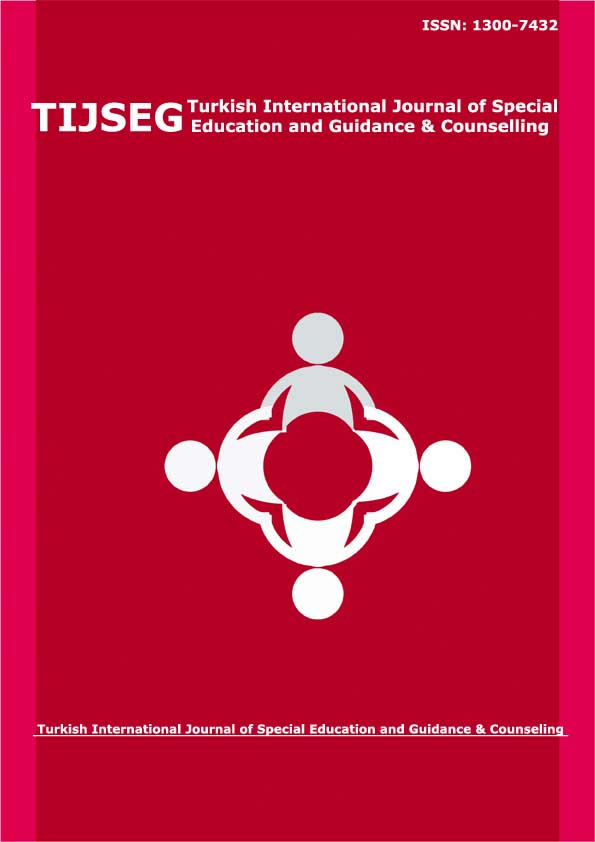
Turkish International Journal of Special Education and Guidance & Counselling
Yazarlar: Gül KAHVECİ, Mehmet SELÇUK
Konular:
Anahtar Kelimeler:Parent–Child Interaction Therapy,ADHD,Disruptive behavior problems,Projective tests
Özet: Parent training programs have proven the most effective way to treat child behavior problems. Without effective treatment, disruptive or problem behavior problems related long-term outcomes include academic difficulties in late school years unemployment, family problems, and mental health problems such as depression, anxiety disorders, addiction, and antisocial personality disorders. Additionally, maltreated children have high rates of physical aggression, noncompliance, and antisocial behaviors. These children exhibit an array of problem social behaviors, which includes poor emotional regulation, distractibility, negative affect, and a resistance to following directions. As an urgent need, a variety of psychotherapies have been developed to improve the well-being of these children and their families. Parent–Child Interaction Therapy (PCIT) is an evidence-based approach and commonly used by clinicians to treat externalizing behavior problems. By training parents, it is possible to enhance abusive parents’ functioning, reduce negative parenting, and increase the numbers of positive interactions, resulting in better outcomes for children. Also, with PCIT it possible to educate parents about appropriate developmental expectations, child management strategies, and increase parents’ self-awareness because dysfunction in the parent-child relationship may cause problem behaviors in children. In order to overcome dysfunction in the parent-child relationship ‘Coercion hypothesis’ can be used for the development and maintenance of deviant behaviors in the child and the disrupted parent-child relationship. According to this hypothesis, parents and children establish a pattern of interaction in which parents escalate their disciplinary strategies over time to include harsh and abusive actions to keep pace with their children’s similarly escalating aversive responses. PCIT involves two phases, the first phase is child-directed interaction (CDI) and it aims to encourage warm, secure, caregiver–child relationships including praise, verbal reflection, imitation, behavioral description, and enjoyment. The second phase is parent-directed interaction (PDI), and it aims to increase child compliance and decrease disruptive behaviors. Specifically, we address the following research questions in an 8 year old boy with ADHD: (1) What are the effects of PCIT in reducing child’s disruptive behavior problems? (2) What are the effects of PCIT on other, related child and parent outcomes? In order to observe the change in disruptive behavior problems a single subject design was used with the addition of pre-posttest applications (State-Trait Anxiety Inventory for Children and Rorschach Inkblot Test). First results put forward positive results where participant’s parents reported significant more improvements in terms of child disruptive behavior problems. The child showed an adaptive approach. He achieved secondary gains by ensuring his participation in the process and was able to communicate positively with his mother. The mother has improved her intellectual capacity about situations like recognizing the distinction between prohibitions and restrictions. Additionally, she was able to put well developed sexual borders, and raised the level of awareness of the situation that exposed the child to anxiety. Final results of the study show that the PCIT is effective in reducing destructive behavior problems, supporting parental interactions in a positive way, supporting the positive change of the home atmosphere and family wellbeing, and establishing an independent individual by making a healthy separation of the participant from the mother possible.